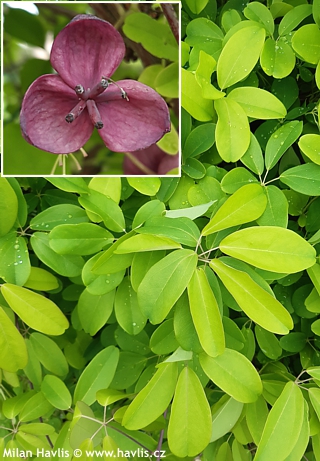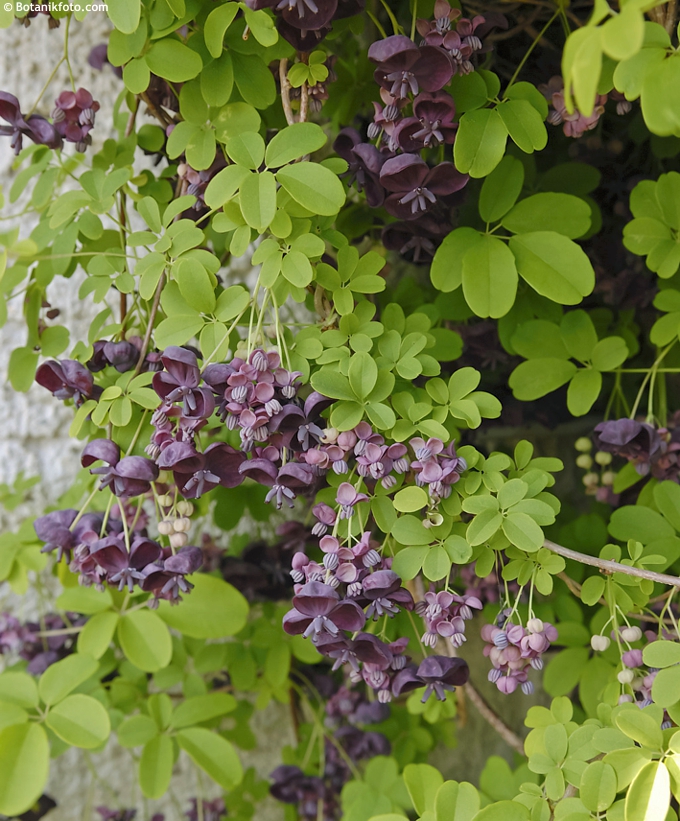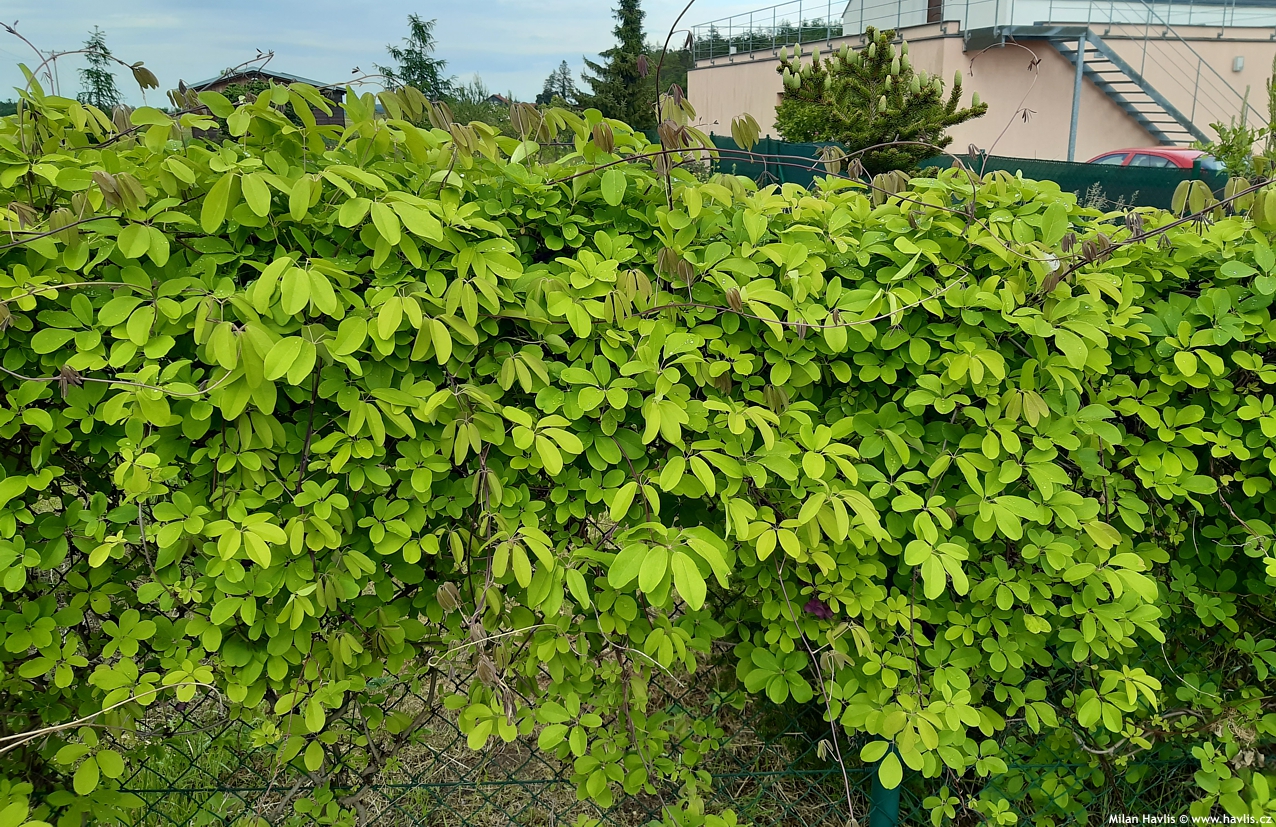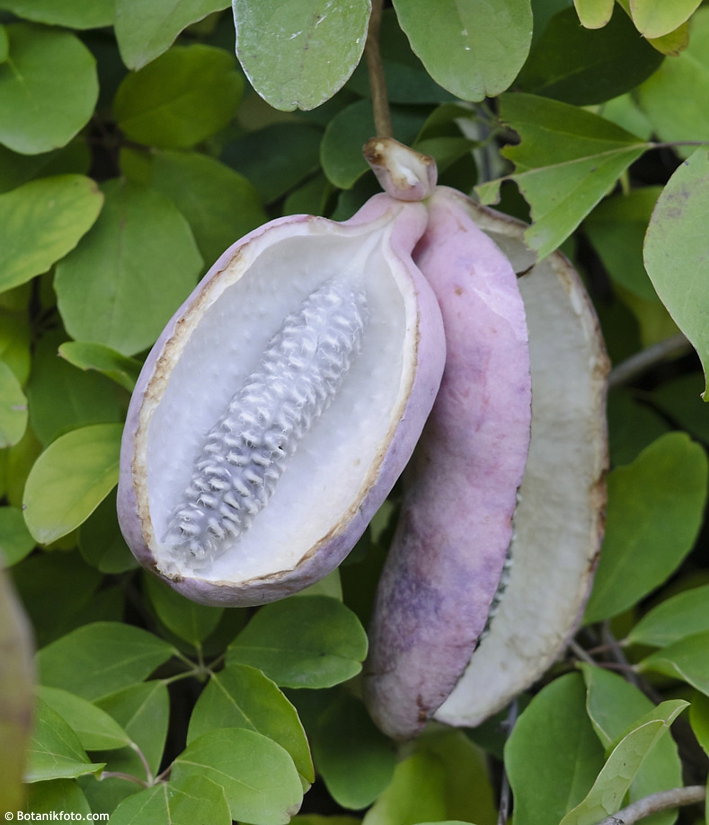Akebia quinata chocolate vine


Akebia makes 3-petalled male (larger) and female (smaller) flowers. They are brownish purple and appear from late April until May. The plant was named Chocolate vine for their fantastic fragrance which recalls chocolate with a bit of spiciness. Though plants are monoecious, fruit is formed if at least two plants grow together to cross-pollinate. And it is edible – 5-10 cm long and 2-4 cm wide pods with somewhat sweet and kiwi-like, white flesh mature in late summer. The grind is bitter as is used as vegetable in Asia (cooked or fried).
Compound leaves are divided into five oblong leaflets notched at the tips. They are soft green and emerge coppery red. In mild winters of USDA zone 7 and above they are evergreen, semi-deciduous in zone 6, and fully deciduous in lower zones. Young twigs are deep purple blue and can grow up to 2 meters per year. Older branches were used for basket weaving.
Akebia is a rampant grower creating impenetrable screens of handsome foliage and exotic flowers, just make sure it does not invade areas with other plants which it might suffocate. Pruning is possible virtually anytime and is commonly recommended after flowering.
It will grow in soil of any pH provided it is well-drained but not too dry (sandy). It likes fertile soil and moisture, though once the plants make deep roots they become drought resistant. During dry spells in summer water young plants freely to help them establish. Akebia needs good support structure as a vine. Without it it will grow as a groundcover. Hardy to abt. -34°C (USDA zone 4).
Last update 11-01-2021
Goods are shipped all over Europe. For Russia and U.K. and for further details please read about SHIPPING OPTIONS HERE.
Are you interested in a serious discount for orders NOV-FEB? Check your options here.
THE PRICES INCLUDE VAT of 15%. For quick conversion you can use 1 CZK = approx. 0.04 EUR
- STANDARD QUALITY - Plants of this group are 1st class quality with number of branches and overall density adequate to their size and age, considering they were container grown.
- DE LUXE QUALITY - This label guarantees a luxurious quality of manually selected plants that, compared to their height and age, are exceptionally dense and beautiful.
- EXTRA - These plants are usually mature and bigger specimens with exceptional overall appearance.
- STANDARD (as described in the plant form) means a tree with a trunk of 190-210 cm and a crown at the top, unless specified differently. The commercial size for trees is their girth measured in the height of 1m from ground.
- HOBBY - These plants are of the same quality as our standard-quality plants but younger and therefore cheaper.
- SHRUB - a woody plant with branches growing bushy from the ground level.
- HALF-STANDARD or MINI-STANDARD - a small tree with shorter trunk, its size is usually specified.
- FEATHERED - These are trees with branches growing already from the base of the trunk and up along the stem.
- GRASSES and PERENNIALS - Sizes given usually read the diameter of the pot or the clump, as specified.
















